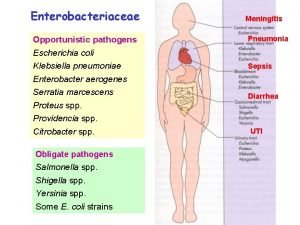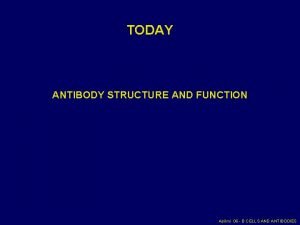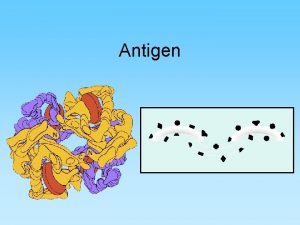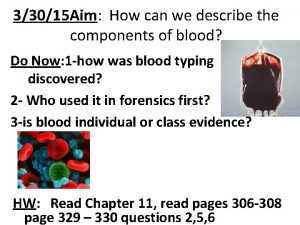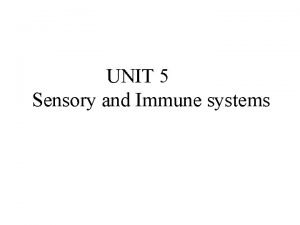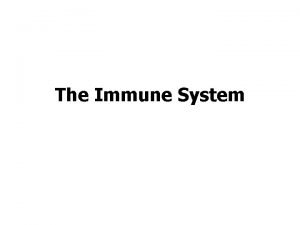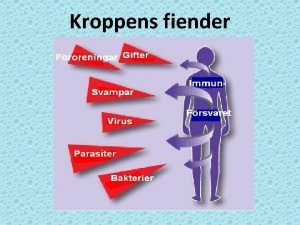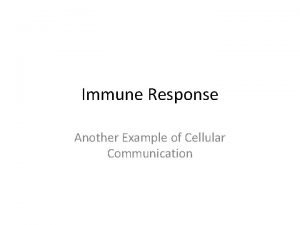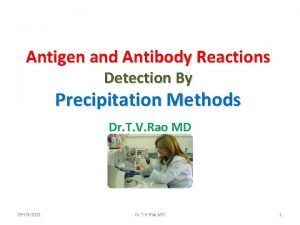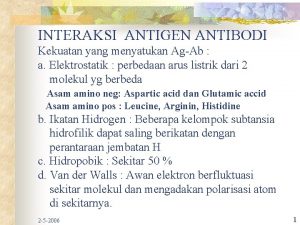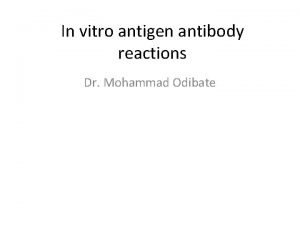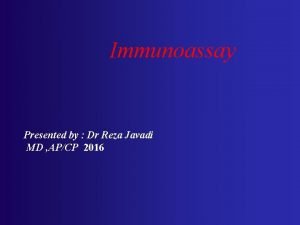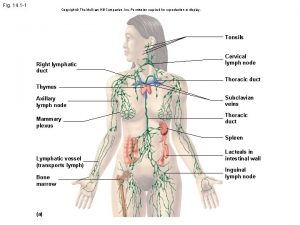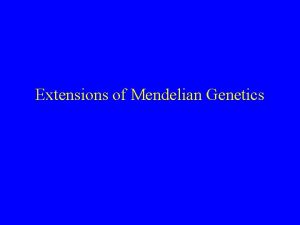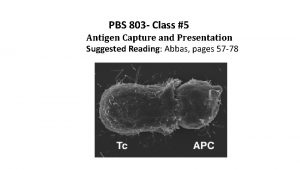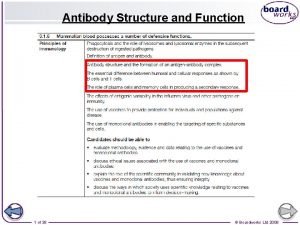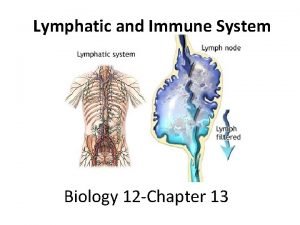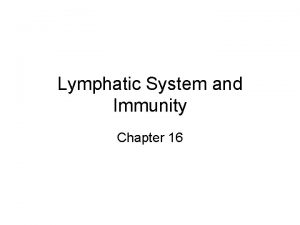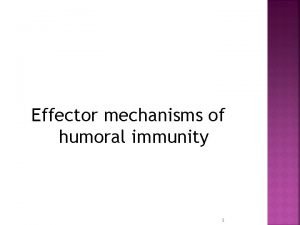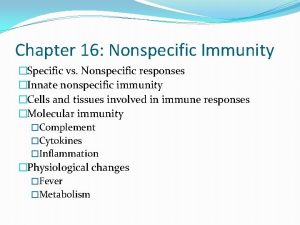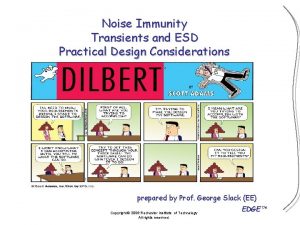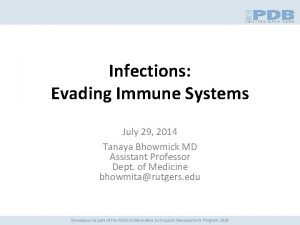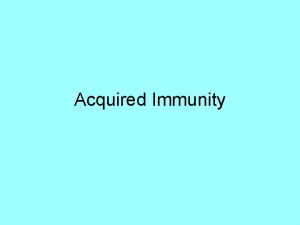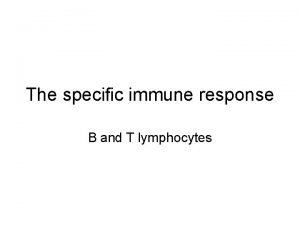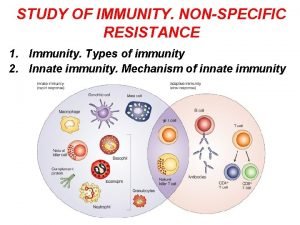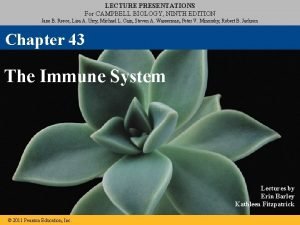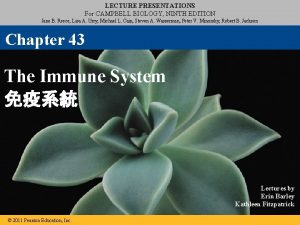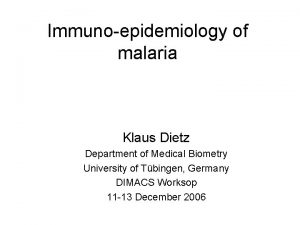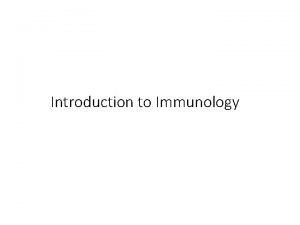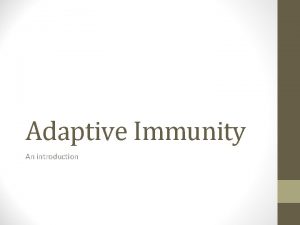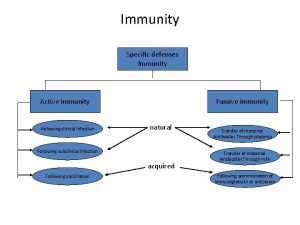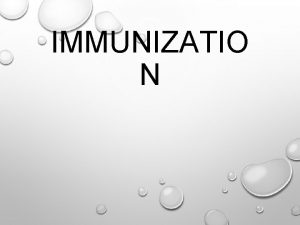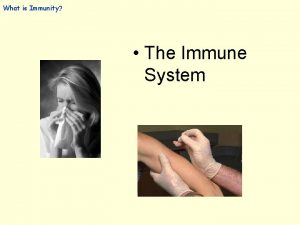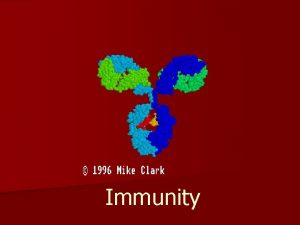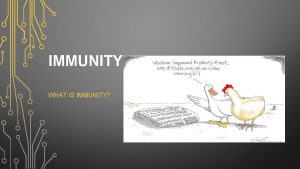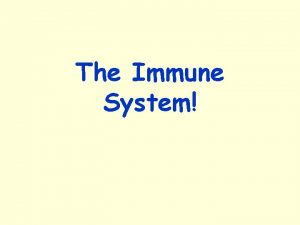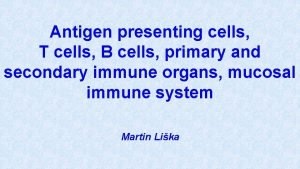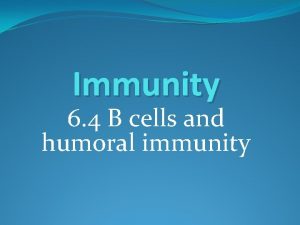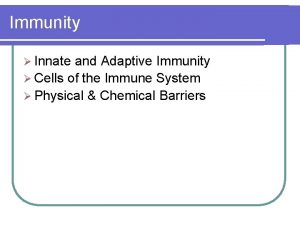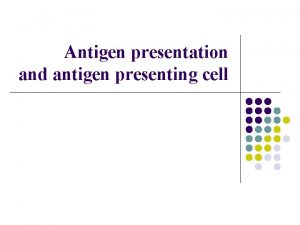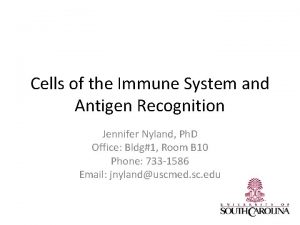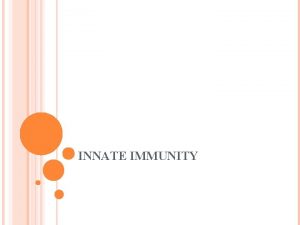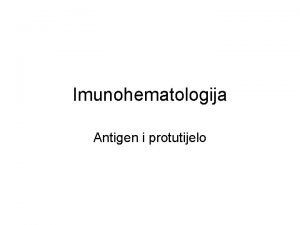T Cells and Immunity Antigen Recognition T cells



















































- Slides: 51


T Cells and Immunity • Antigen Recognition – T cells only recognize antigens that are bound to glycoproteins in plasma membranes

T Cells and Immunity • MHC Proteins – The membrane glycoproteins that bind to antigens – Genetically coded in chromosome 6 • The major histocompatibility complex (MHC) • Differs among individuals

T Cells and Immunity • Two Classes of MHC Proteins – Class I • Found in membranes of all nucleated cells – Class II • Found in membranes of antigen-presenting cells (APCs) • Found in lymphocytes

T Cells and Immunity • Class I MHC Proteins – Pick up small peptides in cell and carry them to the surface • T cells ignore normal peptides • Abnormal peptides or viral proteins activate T cells to destroy cell

T Cells and Immunity • Class II MHC Proteins – Antigenic fragments • From antigenic processing of pathogens • Bind to Class II proteins • Inserted in plasma membrane to stimulate T cells

T Cells and Immunity Figure 20– 16 Antigens and MHC Proteins.

T Cells and Immunity Figure 20– 16 Antigens and MHC Proteins.

T Cells and Immunity • Antigen-Presenting Cells (APCs) – Responsible for activating T cells against foreign cells and proteins

T Cells and Immunity • Phagocytic APCs – Free and fixed macrophages • In connective tissues – Kupffer cells • Of the liver – Microglia • In the CNS

T Cells and Immunity • Non-phagocytic (pinocytic) APCs – Langerhans cells • In the skin – Dendritic cells • In lymph nodes and spleen

T Cells and Immunity • Antigen Recognition – Inactive T cell receptors • Recognize Class I or Class II MHC proteins • Recognize a specific antigen – Binding occurs when MHC protein matches antigen

T Cells and Immunity • CD Markers – Also called cluster of differentiation markers • In T cell membranes • Molecular mechanism of antigen recognition • More than 70 types: – designated by an identifying number • CD 3 Receptor Complex – Found in all T cells

T Cells and Immunity • CD 4 Markers – Found on cytotoxic T cells and suppressor T cells – Respond to antigens on Class I MHC proteins • CD 8 Markers – Found on helper T cells – Respond to antigens on Class II MHC proteins

T Cells and Immunity • CD 8 or CD 4 Markers – Bind to CD 3 receptor complex – Prepare cell for activation

T Cells and Immunity • Costimulation – For T cell to be activated, it must be costimulated • By binding to stimulating cell at second site • Which confirms the first signal

T Cells and Immunity • Two Classes of CD 8 T Cells – Activated by exposure to antigens on MHC proteins • One responds quickly: – producing cytotoxic T cells and memory T cells • The other responds slowly: – producing suppressor T cells

T Cells and Immunity • Cytotoxic T Cells – Also called killer T cells – Seek out and immediately destroy target cells

T Cells and Immunity Actions of Cytotoxic T Cells 1. Release perforin: • To destroy antigenic plasma membrane 2. Secrete poisonous lymphotoxin: • To destroy target cell 3. Activate genes in target cell: • That cause cell to die

T Cells and Immunity Figure 20– 17 Antigen Recognition by and Activation of Cytotoxic T Cells.

T Cells and Immunity • Slow Response – Can take up to 2 days from time of first exposure to an antigen for cytotoxic T cells to reach effective levels

T Cells and Immunity • Memory TC Cells – Produced with cytotoxic T cells – Stay in circulation – Immediately form cytotoxic T cells if same antigen appears again

T Cells and Immunity • Suppressor T Cells – Secrete suppression factors – Inhibit responses of T and B cells – Act after initial immune response – Limit immune reaction to single stimulus

T Cells and Immunity • Helper T Cells – Activated CD 4 T cells divide into • Active helper T cells (TH cells): – secrete cytokines • Memory TH cells: – remain in reserve

T Cells and Immunity Figure 20– 18 Antigen Recognition and Activation of Helper T Cells.

T Cells and Immunity • Four Functions of Cytokines – Stimulate T cell divisions • Produce memory TH cells • Accelerate cytotoxic T cell maturation – Attract and stimulate macrophages – Attract and stimulate NK cells – Promote activation of B cells

T Cells and Immunity Figure 20– 19 A Summary of the Pathways of T Cell Activation.

B Cells and Immunity • B Cells – Responsible for antibody-mediated immunity – Attack antigens by producing specific antibodies – Millions of populations, each with different antibody molecules

B Cells and Immunity • B Cell Sensitization – Corresponding antigens in interstitial fluids bind to B cell receptors – B cell prepares for activation – Preparation process is sensitization

B Cells and Immunity • B Cell Sensitization – During sensitization, antigens are • Taken into the B cell • Processed • Reappear on surface, bound to Class II MHC protein

B Cells and Immunity Figure 20– 20 The Sensitization and Activation of B Cells.

B Cells and Immunity • Helper T Cells – Sensitized B cell is prepared for activation but needs helper T cell activated by same antigen • B Cell Activation – Helper T cell binds to MHC complex • Secretes cytokines that promote B cell activation and division

B Cells and Immunity • B Cell Division – Activated B cell divides into • Plasma cells • Memory B cells

B Cells and Immunity • Plasma Cells – Synthesize and secrete antibodies into interstitial fluid • Memory B Cells – Like memory T cells, remain in reserve to respond to next infection

B Cells and Immunity • Antibody Structure – Two parallel pairs of polypeptide chains • One pair of heavy chains • One pair of light chains – Each chain contains • Constant segments • Variable segments

B Cells and Immunity • Five Heavy-Chain Constant Segments – Determine five types of antibodies • • • Ig. G Ig. E Ig. D Ig. M Ig. A

B Cells and Immunity • Variable Segments of Light and Heavy Chains – Determine specificity of antibody molecule

B Cells and Immunity • Binding Sites – Free tips of two variable segments • Form antigen binding sites of antibody molecule • Which bind to antigenic determinant sites of antigen molecule • Antigen-Antibody Complex – An antibody bound to an antigen

B Cells and Immunity

B Cells and Immunity

B Cells and Immunity • A Complete Antigen – Has two antigenic determinant sites – Binds to both antigen-binding sites of variable segments of antibody • B Cell Sensitization – Exposure to a complete antigen leads to • B cell sensitization • Immune response

B Cells and Immunity • Hapten (also called partial antigen) – Must attach to a carrier molecule to act as a complete antigen • Dangers of Haptens – Antibodies produced will attack both hapten and carrier molecule – If carrier is “normal” • Antibody attacks normal cells • For example, penicillin allergy

B Cells and Immunity • Five Classes of Antibodies – Also called immunoglobulins (Igs) – Are found in body fluids – Are determined by constant segments – Have no effect on antibody specificity

B Cells and Immunity Figure 20– 21 a–b Antibody Structure and Function.

B Cells and Immunity Figure 20– 21 c–d Antibody Structure and Function.

B Cells and Immunity • Seven Functions of Antigen-Antibody Complexes – – – – Neutralization of antigen-binding sites Precipitation and agglutination: formation of immune complex Activation of complement Attraction of phagocytes Opsonization: increasing phagocyte efficiency Stimulation of inflammation Prevention of bacterial and viral adhesion Figure 22– 22

B Cells and Immunity • Primary and Secondary Responses to Antigen Exposure – Occur in both cell-mediated antibodymediated immunity Figure 22– 22

B Cells and Immunity • Primary and Secondary Responses to Antigen Exposure – First exposure • Produces initial primary response – Next exposure • Triggers secondary response • More extensive and prolonged • Memory cells already primed

B Cells and Immunity • The Primary Response – Takes time to develop – Antigens activate B cells – Plasma cells differentiate – Antibody titer (level) slowly rises

B Cells and Immunity • The Primary Response – Peak response • Can take 2 weeks to develop • Declines rapidly – Ig. M • Is produced faster than Ig. G • Is less effective

B Cells and Immunity • The Secondary Response – Activates memory B cells • At lower antigen concentrations than original B cells • Secretes antibodies in massive quantities
 O antigen and h antigen
O antigen and h antigen Difference between acquired immunity and innate immunity
Difference between acquired immunity and innate immunity Lymphocyte antigen 6 complex antibody
Lymphocyte antigen 6 complex antibody Hapten definition
Hapten definition Antigen vs superantigen
Antigen vs superantigen Blood type antigen chart
Blood type antigen chart Non-self antigen
Non-self antigen Antigen defintion
Antigen defintion Antigen-antikroppsreaktion
Antigen-antikroppsreaktion Antigen attacker
Antigen attacker Toxin neutralization test
Toxin neutralization test Antigen antibody
Antigen antibody Precipitation test
Precipitation test Fluorochromes
Fluorochromes Interaksi antigen antibodi
Interaksi antigen antibodi Antigen antibody
Antigen antibody Properties of antigen
Properties of antigen Define immunity
Define immunity Antigen binding site
Antigen binding site Recessive epistasis in mice
Recessive epistasis in mice Parham
Parham Humoral and cell mediated immunity difference
Humoral and cell mediated immunity difference Chapter 13 lymphatic system and immunity
Chapter 13 lymphatic system and immunity Define immunity in microbiology
Define immunity in microbiology Chapter 16 lymphatic system and immunity
Chapter 16 lymphatic system and immunity The lymphatic capillaries are
The lymphatic capillaries are Development of paranasal sinuses
Development of paranasal sinuses Chlorocruorin
Chlorocruorin Venn diagram for animal and plant cells
Venn diagram for animal and plant cells Masses of cells form and steal nutrients from healthy cells
Masses of cells form and steal nutrients from healthy cells Active artificial immunity
Active artificial immunity Effector mechanism of humoral immunity
Effector mechanism of humoral immunity Nonspecific vs specific immunity
Nonspecific vs specific immunity When was canra passed
When was canra passed Adaptive noise immunity
Adaptive noise immunity Keva immunity booster
Keva immunity booster Assis prof
Assis prof Innate immunity examples
Innate immunity examples Iec 62132-4
Iec 62132-4 Wepapers
Wepapers Acquired immunity definition
Acquired immunity definition Immunity
Immunity Active vs passive immunity
Active vs passive immunity Non-specific immunity
Non-specific immunity Non specific innate immunity
Non specific innate immunity Cell mediated immunity
Cell mediated immunity Cell mediated immunity
Cell mediated immunity Innate immunity first line of defense
Innate immunity first line of defense Innate immunity
Innate immunity Adaptative immunity
Adaptative immunity 1st line of defense immune system
1st line of defense immune system Passive immunity
Passive immunity
